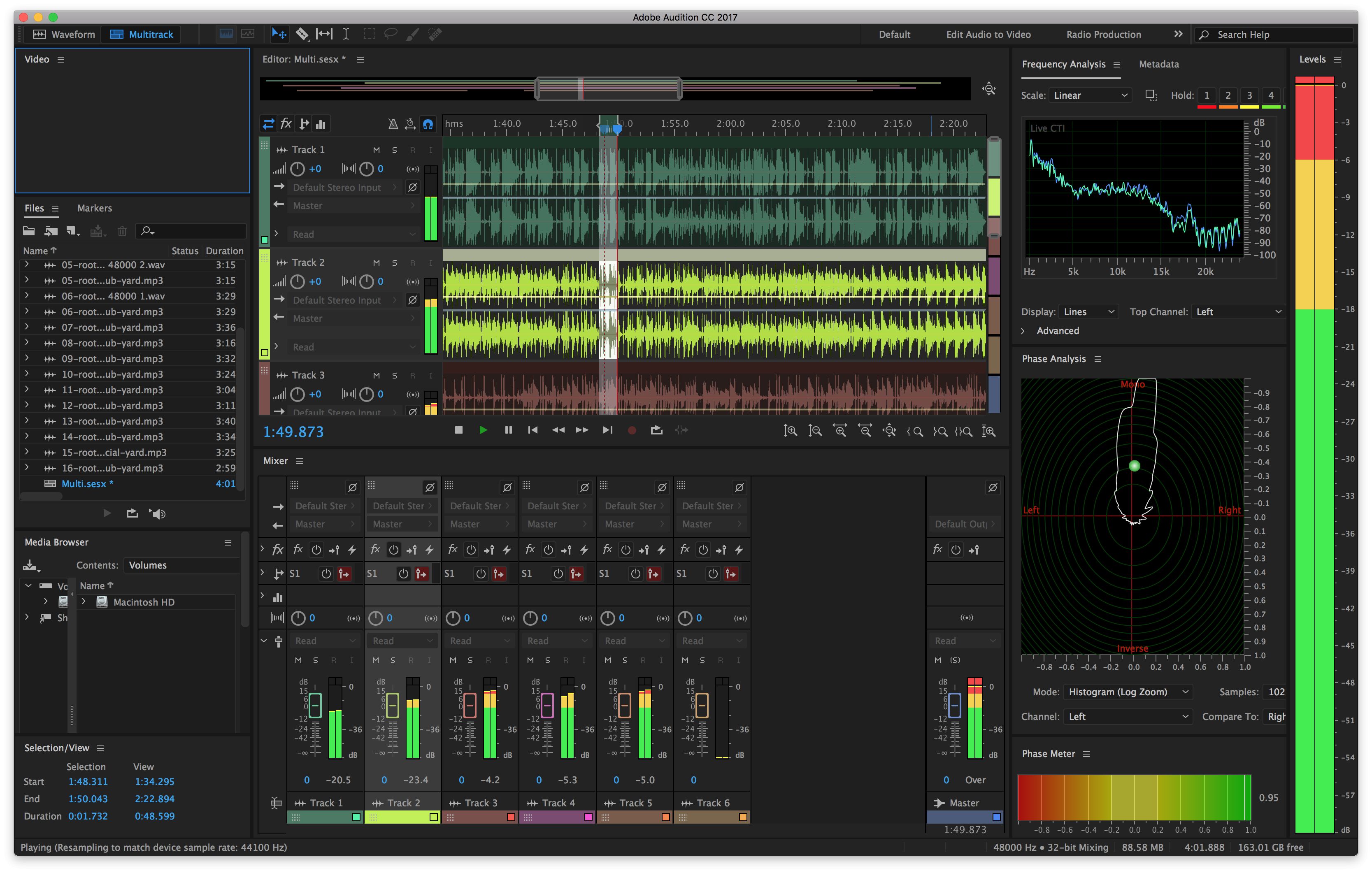
- #Adobe audition cc add plugins how to
- #Adobe audition cc add plugins install
- #Adobe audition cc add plugins software
- #Adobe audition cc add plugins windows
Navigate to the "Effects" menu and select "Audio Plug-In Manager.". Open Adobe Audition and create a new audio project. #Adobe audition cc add plugins install
Install the iZotope plugins on your computer.To use iZotope plugins in Adobe Audition, follow these steps: How do I use iZotope plugins in Adobe Audition? Your VST plugins will now be available to use in Adobe Audition.In the ASIO settings, make sure the "VST Plug-In Custom Folder" option is enabled.Make sure the correct audio device is selected and click "ASIO Settings.".Select "Preferences" and click "Audio Hardware.".Open Adobe Audition and navigate to the "Edit" menu.To enable VST in Adobe Audition, follow these steps: You can add VST plugins to your projects to enhance your audio editing and mixing capabilities. Yes, Adobe Audition supports VST plugins. Your VST plugins will now appear in the "Effects" menu and can be used in your projects.

Navigate to the folder where your VST plugins are installed and click "OK.".Open Adobe Audition and navigate to the "Effects" menu.First, make sure your VST plugins are installed on your computer.To add VST plugins to Adobe Audition, follow these steps:
#Adobe audition cc add plugins how to
Questions you might be asking How to add VST plugins to Adobe Audition? When you add Waves plugins to your Adobe Audition session, they will appear in the effects drop-down menu, along with Audition's default effects.
Once the scan is done, create a new session with a supported sample rate, add a track, and load your Waves plugins. Click on "Scan for Plug-ins" to initiate the rescan. Launch Adobe Audition and go to the Effects menu. #Adobe audition cc add plugins software
Refer to the Network Guide for more information on port mapping.After verifying that the plugin software is installed and that the license is activated, you now need to rescan for plugins.
If you see "port: UPnP/PMP" in the plugin and are also experiencing connection problems, you need to disable UPnP and properly configure your network. The message "port: failed" in the plugin indicates you will be unable to connect to an outside Contact, but it should work internally. If you see "port: not mapped" in the Source-Connect plugin in Audition, there is a good chance that a connection will go through, but this depends on your particular type of network. Note: Currently it is not possible to record the incoming audio in Audition. The other party can either accept or deny your request for a connection. Connect to the other studio by selecting their name from the list in the Contacts panel and pressing the “Connect” button. Audition only allows for send audio, so the output will still be set to your usual headphones or interface. In the Settings panel of Source-Connect, change the input to Source-Connect Link. Log in to your account and take a look at the Source-Connect plugin window that comes up.Ĭonfiguring Source-Connect to work with Audition The Source-Connect Link will appear in the list. Select VST > Source Elements at the bottom. Click the arrow in the FX list to display a pop-up menu of the available effects for the Master Track. Instantiate the Source-Connect Plugin in Audition You can do so by clicking the “R” button in the track. Record Arm Track 1 in order to always hear the incoming audio on that track. If you would like to use a live input, such as a microphone, make sure you have the option selected in the Preferences section of Audition. #Adobe audition cc add plugins windows
Display the Effects Rack window by going to Windows > Effects Rack.Press the spacebar to confirm that your audio plays, then press the spacebar again to stop the playback. Your view should now look something like this: Create a new Multitrack session by going to File > New > Multitrack Session.Add any directories that contain other VST Plug-ins to the list as well Audition will scan these directories (and all-subdirectories) for new plug-ins. You can do so by going to Effects > Audio Plug-In Manager.

 Verify that Audition knows about this location. It is located at C:\Program Files\Steinberg\VstPlugins for Windows and at /Library/Audio/Plug-Ins/VST for Mac. Please make sure you have the Source-Connect VST Plug-in installed. This document will show you how to set up the Source-Connect Plug-In VST in Adobe Audition (Creative Cloud application edition).
Verify that Audition knows about this location. It is located at C:\Program Files\Steinberg\VstPlugins for Windows and at /Library/Audio/Plug-Ins/VST for Mac. Please make sure you have the Source-Connect VST Plug-in installed. This document will show you how to set up the Source-Connect Plug-In VST in Adobe Audition (Creative Cloud application edition).







 0 kommentar(er)
0 kommentar(er)
